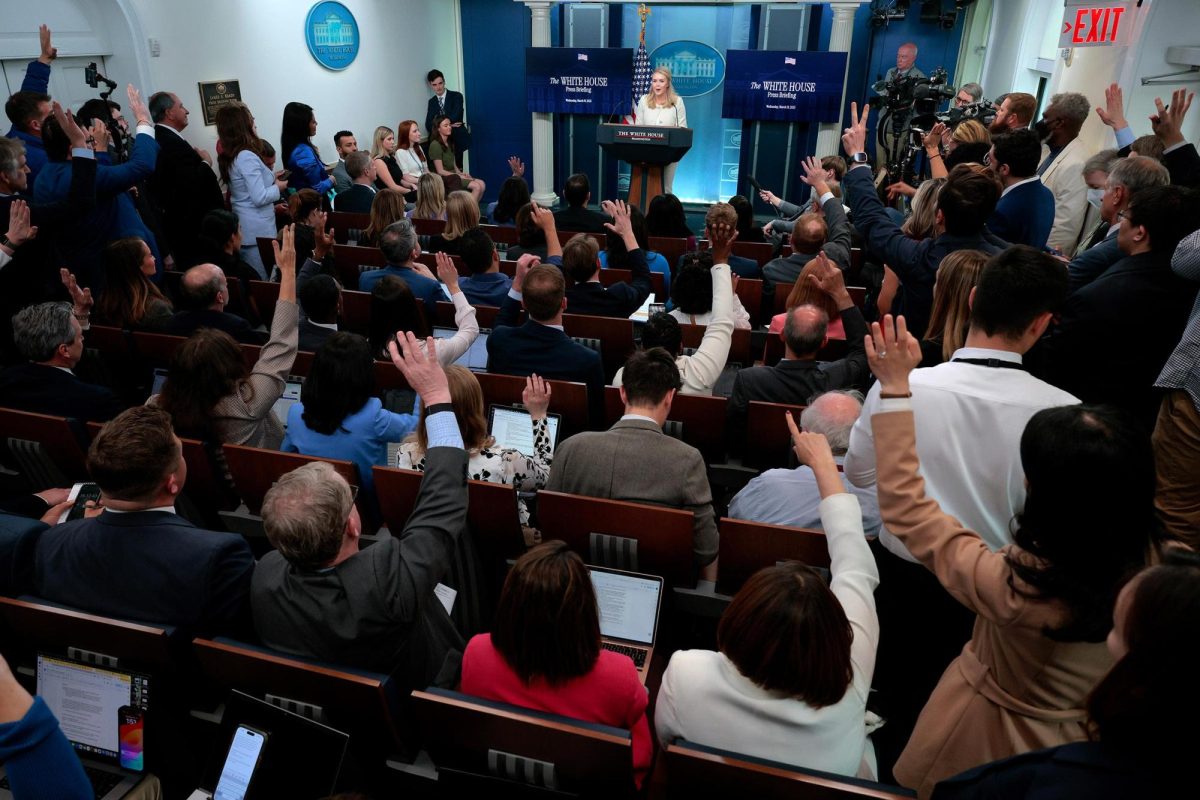(CNN) — The White House Correspondents’ Association says the Trump administration should abandon its “wrong-headed effort” to take control of the press briefing room seating chart.
In a memo to its nearly 900 members on Monday, the association charged the White House with trying to “exert pressure on journalists over coverage they disagree with.”
Axios and CNN reported Sunday that the White House intends to take charge of the seating assignments, bigfooting the association, which has managed the matter for decades.
“The most obvious end result of this reported plan is the punishment, not elevation, of journalists,” the association’s president Eugene Daniels wrote Monday. “It’s the same at the Pentagon, where the administration removed longstanding outlets whose coverage they disagreed with for other outlets that did not regularly cover the building.”
Since the beginning of Trump’s second term, Trump and his press aides have shown a clear desire to do away with White House press corps norms and traditions. The actions have all trended in the same direction: Toward promoting pro-Trump friends and punishing perceived foes.
In February the White House banned The Associated Press from many presidential events, prompting The AP take legal action. The White House also began to organize the daily “press pool” of reporters who travel with Trump, bypassing the association.
Press Secretary Karoline Leavitt has claimed she is embracing digital media and making room for more journalists, but in practice the changes have favored pro-Trump media outlets that cheerlead for Trump rather than diligently covering him.
The White House’s actions have put the association in a bind. The WHCA has members from 296 news organizations, all of whom are rivals to one degree or another, but who work together to ensure independent access to the White House.
The association is governed by a board of journalists who are elected by their press corps peers to carry out the responsibilities that the Trump White House is now plotting to take over.
Briefing room seats, for example, are assigned by the association after considering which news outlets devote the most resources to White House coverage and have the widest reach with the public.
Under both Republican and Democratic presidents, journalists from the country’s biggest TV networks, newswires, newspapers, and radio networks have been seated in the front rows.
Daniels pointed out in Monday’s memo that the association has dozens of digital-only members, some of whom have briefing room seats, including conservative outlets like the Daily Caller and Newsmax.
“The WHCA has previously offered, and still stands ready, to discuss with the White House how to accommodate more and different types of journalists,” Daniels wrote.
But Trump allies (and some past Republican press secretaries) have been urging the administration to blow up the current system.
Leavitt and her colleagues could stock the briefing room’s front rows with sycophantic figures – or move more serious questioners to the back.
“For the public to get the information it needs to understand and make decisions about the most powerful office in the world, it needs news produced by experienced, professional journalists who ask tough questions and produce fair coverage,” Daniels wrote.
He added, “if a White House’s goal instead is to receive ‘favorable coverage’ through easy questions, the American people lose out.”
During an appearance Monday on Fox News, Leavitt said “we are seriously considering” taking charge of the briefing room seating chart.
She called Daniel’s memo “unserious” and took aim at the association writ large, saying “we believe it is fundamentally, fundamentally unfair that a group of DC-based elite journalists get to choose who gets to cover the President of the United States.”
However, the association welcomes new media outlets and new members all the time.
And for as long as seats have been installed in the briefing room, the WHCA board has equitably assigned those seats to reflect the changing shape of the press corps.
Past WHCA president Steven Portnoy wrote on X Monday that “in the 2022 review I ran, we oversaw the addition of more than a dozen new and emerging outlets” in the briefing room.
“Reporters who actually cover the WH know that without these systems — arranged by a representative body with everyone’s buy-in — all would suffer,” Portnoy wrote. “So ask yourself — why would any government official seek to disrupt all that? With what expertise? To achieve what objective?”


